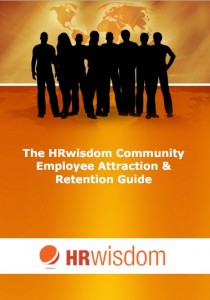Today HRwisdom contributor Victor Daily looks at: Bring Your Own Device To Work and asks – is it a good idea?
Over to Victor . . .
Bring Your Own Device To Work (BYOD)
In the environment of IT services, change is the biggest constant. Along with the advent and growth of cloud computing, the concept of Bring Your Own Device (BYOD) is forcing all sizes of companies to deal with the many challenges and opportunities that this innovation presents.
With over 700 million smartphones and several hundred million tablets shipped in 2012, the world now has more smart devices in the market than employees.
 With an increasingly mobile and wired working force and population, many businesses realise that their employees are working from a multitude of devices, not just company-supplied appliances.
With an increasingly mobile and wired working force and population, many businesses realise that their employees are working from a multitude of devices, not just company-supplied appliances.
However, these businesses are grappling with a multitude of items related to this changing environment, including:
- Device security
- Data privacy and security
- Compatibility
- Software and hardware integration
- Network access and service levels
- Backup and disaster recovery
- Human resources and retention compliance issue.
In fact, the Bring Your Own Device issue has moved out of the realm of being controlled by the MIS and IT departments. The complexities, with a range of pros and cons, are involving all levels of corporate staff and planning.
The Non-Technical Issues
For example, in just the area of human resources, the BYOD discussion now includes such thing as:
- How free is a company to monitor such dual-use devices? With a personal ownership and use, there are limits on the ability to check all the applications and data transmitted on a device.
- The possibility of claims for compensation for use of the device and off-the-clock work time claims.
- Potential tax and related financial consequences of a benefit of employment.
- Work place confidentiality is a major issue, particularly in the event of voluntary or involuntary separation of the employee. Policies for retaining work records, resetting passwords and the like are all hurdles being addressed by employers.
[box type=”tick”]
FREE WORKPLACE LAW BRIEFINGS: See available session times here: Free Workplace Law Briefings For Employers [/box]
The Dollar Issues
From an accounting perspective, new rules and regulations are necessary to deal with issues such as:
- Shared cost of the device and usage fees
- Billing issues and disputes
- Dealing with multitudes of service providers
- Sharing costs of convenience versus usage for business.
- Responsibilities for maintenance and upgrades
Back to the IT Issues
In the end, however, the ultimate issue of BYOD comes down to the IT constraints. Regardless of all other benefits and advantages, any system that allows significant threats to data and the IT infrastructure requires extremely careful scrutiny and diligence.
The many opportunities for conflict with established IT protocols have many tech managers extremely concerned. It is not merely an issue of turf in this case. These individuals responsible to maintain system integrity and prevent breaches point out the near impossibility of doing so with such a variety of equipment and version, platform, configurations and incompatible features. The challenge of providing and monitoring access rights and protocols compounds the issues into a literal security nightmare.
At the heart of the issue is privacy and security. This applies to workers as well as the companies that employ them. It is a two-way street where the company may have access to personal data, and the employee opening the door to secured company applications and data.
As an example, the question becomes one of the proper actions if a personal device is lost or stolen. Will the company have the right to reach out and erase all data on the device? Will that mean automatic installation of such remote software for any personal BYOD item? What steps are to protect the individual’s private data in such a situation?
Another, more frightening situation for the individual is culpability for a major corporate security breach. With some recent security issues causing damages in the hundreds of millions of dollars, this is no small concern to any company or employee.
[box type=”tick”]
FREE WORKPLACE LAW BRIEFINGS: See available session times here: Free Workplace Law Briefings For Employers [/box]
The BYOD issue has already seen some companies stepping back from an early and full adoption of its advantages. There is no question, however, that the world of BYOD is here to stay in some form. The issues will absorb a lot of management attention and focus in the coming months.
About Victor Daily
Victor Daily is a business consultant and writer. He currently writes about the newest trends in business and human resources. He is also a consultant for Apply Direct in Australia.















